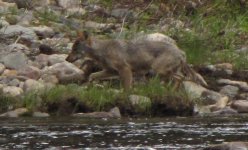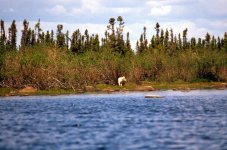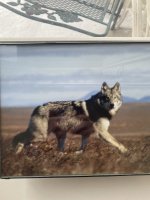I've never seen a wolf when canoeing or camping. I'm not eager to. In fact, I don't think I'd want to see a pack of wolves if I were all alone in the wilderness. Fear. I hope that doesn't make me a bad person.
Have you any wolf stories or opinions about them?
So says the following article, which estimates the wolf population in each state and has other info about wolves. Little Red Riding Hood might not be visiting Alaska or Minnesota in the future.

 a-z-animals.com
a-z-animals.com
Have you any wolf stories or opinions about them?
- Gray wolves were listed as an endangered species in 1974, but their numbers are growing. In the US gray wolves have been removed from the endangered list.
- The gray wolf occupies only 10% of its former habitat, mostly due to human housing development.
- Wolves help keep our ecosystems healthy. Their existence has a positive trickle-down effect on every part of the forest.
So says the following article, which estimates the wolf population in each state and has other info about wolves. Little Red Riding Hood might not be visiting Alaska or Minnesota in the future.

Wolf Population by State: How Many Wolves Are in the United States?
The wolf population by state varies by U.S. region. Here's a look at how many wolves you'll find in various ares of the country.



